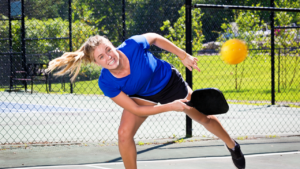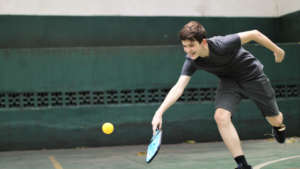With a swift flick of the wrist and a precise placement of the paddle, pickleball players unleash the magic of the backhand shot, transforming it into a true work of art on the court. Considered the trickiest shot in this fast-paced sport, a flawless backhand can take your game to extraordinary heights. The backhand brilliance in pickleball lies not only in the technical finesse required but also in the strategic mindset and sheer creativity demanded from players. In this article, we delve into the secrets of mastering the backhand shot, unraveling the intricacies of form, footwork, and finesse that will unlock the untapped potential of this challenging stroke. Whether you’re a seasoned pro seeking to refine your skills or a beginner venturing into the world of pickleball, prepare to be captivated as we explore the art and science behind excelling in pickleball’s trickiest shot.
Table of Contents
- Mastering the Backhand Slice: A Key Component of Pickleball’s Tricky Shot Arsenal
- Unlocking the Secrets of Timing and Placement for a Stellar Backhand in Pickleball
- Building Strength and Control: Essential Exercises to Elevate Your Pickleball Backhand
- Crafting a Deceptive Spin: Techniques to Enhance Your Backhand’s Versatility in Pickleball
- Perfecting the Backhand Dink: Strategies for Precision and Consistency in Pickleball
- Q&A
- To Wrap It Up
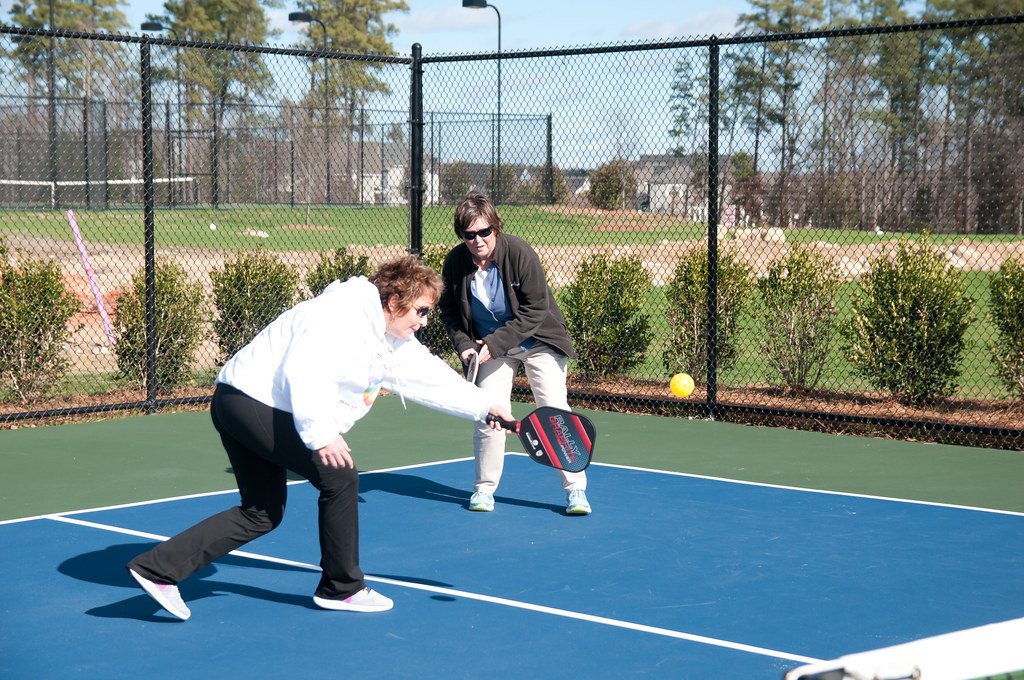
Mastering the Backhand Slice: A Key Component of Pickleball’s Tricky Shot Arsenal
Effortlessly gliding through the air, the backhand slice is a mesmerizing shot that leaves your opponents guessing. With its subtle spin and deceptive trajectory, this shot has become a game-changer in the world of pickleball. Mastering the backhand slice not only adds finesse to your gameplay but also gives you the upper hand on the court.
One of the secrets to a successful backhand slice lies in its purposeful lack of power. Unlike other aggressive shots, the backhand slice emphasizes precision and finesse over brute force. The ideal strategy is to catch your opponent off-guard by using this subtle shot strategically. By mastering the backhand slice, you’ll be able to effortlessly control the ball’s placement, forcing your opponents into unfavorable positions and opening up opportunities for winning shots.
- Perfecting the grip: The key to a successful backhand slice lies in the grip. Start by placing your dominant hand’s index finger along the paddle’s edge, allowing for better control and spin.
- Slowing it down: The backhand slice requires a slower, more deliberate swing. As you approach the shot, focus on using the paddle’s face to slice through the ball with a smooth underhand motion. This technique reduces the speed of the shot while adding slice to the trajectory, making it harder for your opponent to anticipate the ball’s path.
- Mastering the art of deception: The beauty of the backhand slice lies in its ability to disguise your intentions from your opponents. By consistently mixing up your shots and incorporating the backhand slice when they least expect it, you keep your opponents on their toes and gain a competitive edge.
As you embark on your journey to master the backhand slice, remember to practice patience and finesse. With time and dedication, this tricky shot will become an indispensable weapon in your pickleball arsenal, allowing you to outsmart and outmaneuver your opponents with each slice. So grab your paddle, hit the court, and let the backhand slice take your game to new heights!
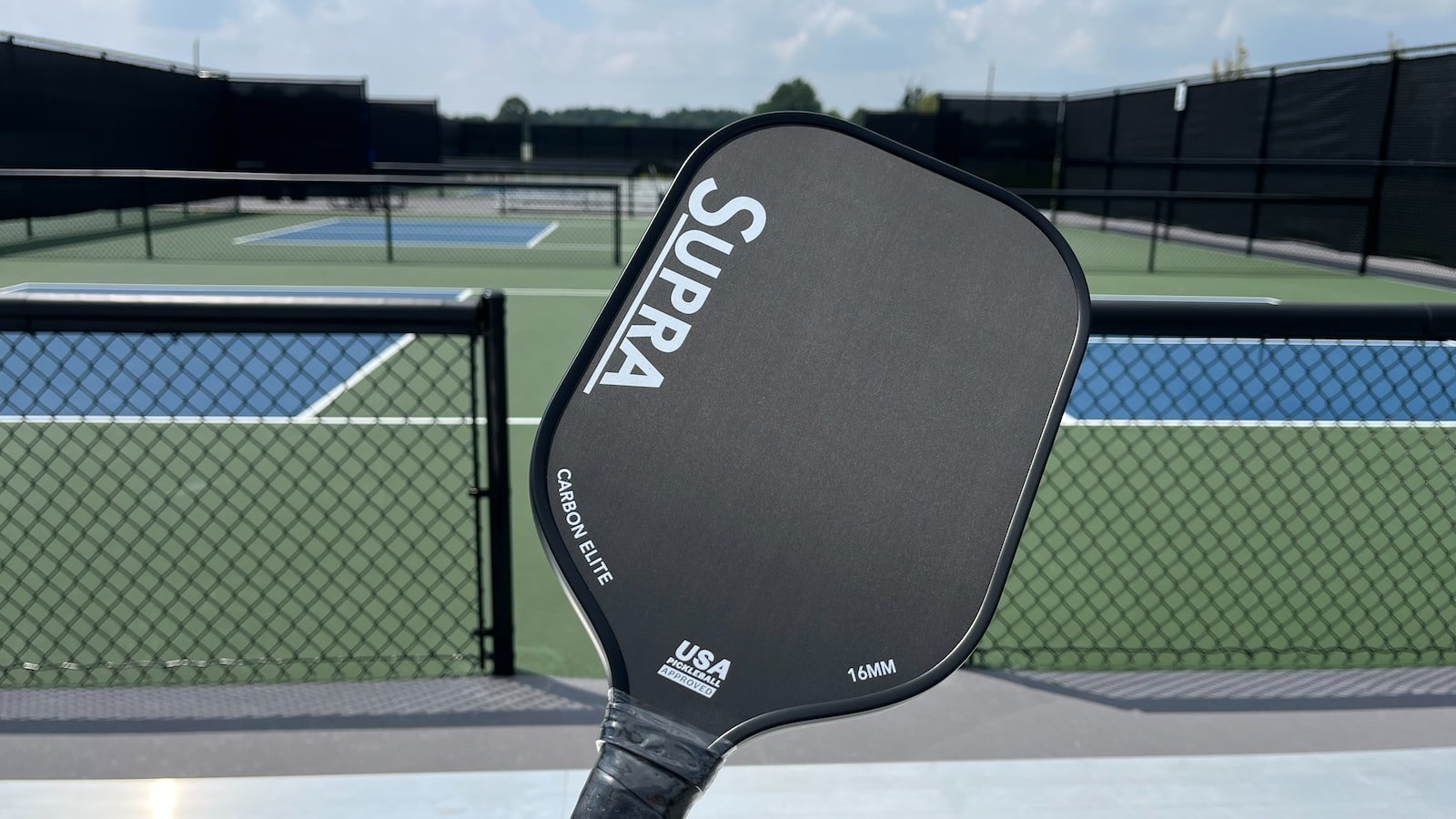
Unlocking the Secrets of Timing and Placement for a Stellar Backhand in Pickleball
Mastering the art of a stellar backhand in pickleball requires more than just technique and power. It involves unlocking the secrets of timing and placement, which can turn an ordinary shot into a game-changing winner.
Timing is everything in pickleball, and the same principle applies to your backhand. The key is to anticipate the incoming shot and position yourself accordingly. By reading your opponent’s body language and being mindful of their positioning on the court, you can gain a split-second advantage that allows you to execute a well-timed backhand. This anticipation not only helps you get into position but also helps you to prepare mentally for the shot.
Placement is equally crucial in unleashing a stellar backhand. By strategically placing your shots, you can keep your opponent off balance and make it difficult for them to counter your shots effectively. Aim for the corners of the court, where your opponent will have to cover more ground, or aim to exploit their weaker side by directing the backhand shot away from their stronger hand. By varying your shot placement, you increase your chances of keeping your opponent guessing and ultimately gaining the upper hand in the rally.
- Key Tips for Timing and Placement:
- Study your opponent’s movements and anticipate their shots
- Position yourself correctly for the backhand
- Focus on timing the shot at the peak of its bounce
- Aim for the corners or exploit your opponent’s weaker side
- Practice varying shot placement to keep your opponent off balance
By dedicating time to understanding the secrets of timing and placement in your backhand shots, you can take your pickleball game to the next level. Unlock the potential of your backhand, and surprise your opponents with your newfound mastery of this essential shot.

Building Strength and Control: Essential Exercises to Elevate Your Pickleball Backhand
Exercises to Enhance Your Pickleball Backhand
Developing a strong and controlled backhand in pickleball can greatly improve your overall game. By practicing a combination of specific exercises, you can elevate your backhand technique to new heights. Here are a few essential exercises that will help you build strength and control in your pickleball backhand:
- Forearm Strengthening: Utilize exercises that target your forearm muscles, such as wrist curls and reverse wrist curls. These exercises will not only increase your wrist stability but also provide you with better control and power on your backhand shots.
- Resistance Band Drills: Incorporate resistance band drills into your training routine to improve your backhand stroke. Attach a resistance band to a sturdy anchor, hold the other end in your hand, and simulate your backhand motion. The resistance offered by the band will help you strengthen the muscles involved in your backhand swing.
- Footwork and Balance: A strong backhand shot requires proper footwork and balance. Incorporate agility ladder drills and cone exercises into your training to enhance your footwork and stability. By improving your movement and balance, you’ll be able to position yourself better for a powerful and accurate backhand shot.
Remember, it’s essential to practice these exercises regularly to see notable improvement in your pickleball backhand. Building strength and control in this crucial aspect of the game will undoubtedly elevate your overall performance on the court. So grab your paddle, start incorporating these exercises into your training regimen, and watch as your backhand becomes a formidable weapon in your pickleball arsenal!
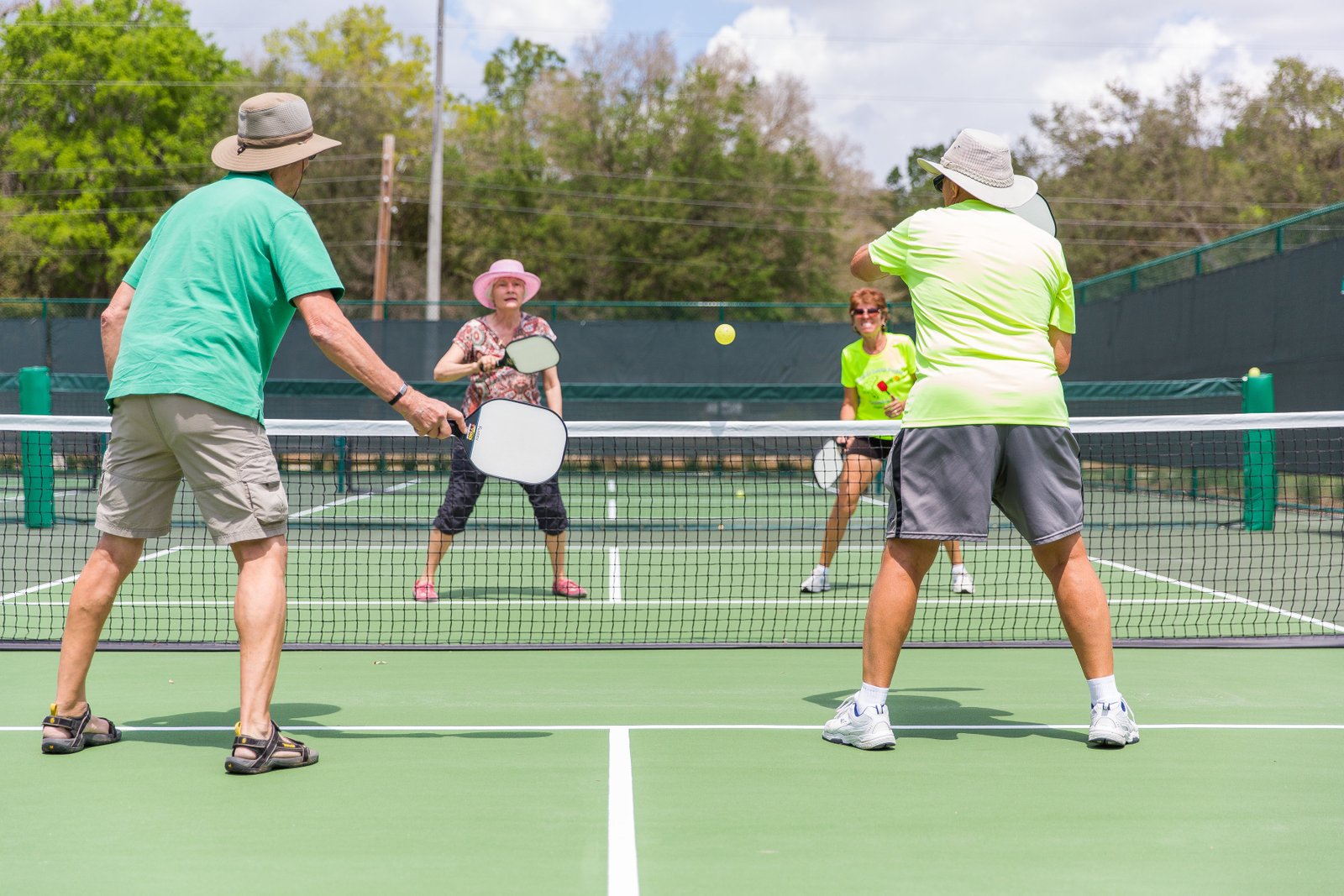
Crafting a Deceptive Spin: Techniques to Enhance Your Backhand’s Versatility in Pickleball
Master the Art of Trickery
When it comes to pickleball, a well-crafted spin can be the difference between a good shot and a great shot. Enhancing the versatility of your backhand by incorporating deceptive techniques not only adds an element of unpredictability to your game but also keeps your opponents on their toes.
Explore These Techniques to Elevate Your Backhand Skills:
- Mix Up Your Grips: Experiment with different grips to give your backhand shots unmatched versatility. From the Eastern grip to the Continental grip, each offers its own advantages when it comes to generating spin and power. Adapting your grip depending on the situation can catch your opponents off guard and provide you with a strategic edge.
- Vary Your Shot Types: Don’t limit yourself to just one type of backhand shot. Incorporate slice shots, topspin shots, and even drop shots into your arsenal. Each shot offers its own unique spin and trajectory, making it harder for your opponent to anticipate your next move.
- Perfect the Slice: The slice is a versatile backhand technique that can be used defensively or offensively. Mastering the art of slicing allows you to change the pace and direction of the ball, leaving your opponents scrambling to respond.
- Develop a Deceptive Follow-Through: Fine-tuning your follow-through is key to creating a deceptive spin. Practice disguising your shots by altering the angle or speed of your follow-through. This will add an extra layer of confusion for your opponents and make it harder for them to anticipate the trajectory of the ball.
Unleash Your Backhand’s Potential
By incorporating these deceptive techniques into your backhand, you’ll gain the upper hand on the pickleball court. Keep your opponents guessing and enhance your versatility with a diverse range of spins and shot types. Craft your own style and become a true master of the deceptive backhand spin!
Perfecting the Backhand Dink: Strategies for Precision and Consistency in Pickleball
Strategies for Mastering the Backhand Dink: Unlocking Precision and Consistency in Pickleball
When it comes to honing your pickleball skills, perfecting the backhand dink is a game-changer. The backhand dink offers a remarkable opportunity to place the ball with pinpoint accuracy and maintain a steady rhythm on the court. To become a proficient player capable of executing this technique flawlessly, here are some strategies to help you achieve precision and consistency.
1. Master the Grip:
The foundation for a successful backhand dink starts with the correct grip. Maintain a relaxed grip on your paddle, ensuring that your fingers are aligned with the paddle face and your thumb rests gently on the handle. This grip allows you to maneuver the ball smoothly, improving your control and finesse during the shot.
2. Focus on Footwork:
Footwork plays a crucial role in executing the backhand dink accurately. Position yourself in a balanced and ready stance, with your weight evenly distributed on both feet. Anticipate the ball’s trajectory, taking small steps before making contact with the ball. This ensures that you maintain proper body position and generate power from your legs, resulting in a controlled and consistent shot.
3. Develop Soft Touch:
Pickleball is a finesse game, and the backhand dink epitomizes this aspect. Cultivate a soft touch by slightly loosening your grip and using your forearm and wrist to guide the paddle. Allow the ball to bounce off the paddle gently, rather than employing forceful swings. This technique enables you to control the ball’s trajectory precisely and keep it low over the net, placing your opponents in a defensive position.
By incorporating these strategies into your practice routine, you’ll gradually refine your backhand dink and transform it into a weapon of precision and consistency. Remember, practice makes perfect, so stay dedicated and focused on mastering this valuable shot.
Q&A
Why is the backhand shot considered the trickiest shot in pickleball?
The backhand shot is considered tricky in pickleball because players have to hit the ball from the opposite side of their dominant hand, which requires more control and coordination. Additionally, the backhand shot often requires players to react quickly to shots that are hit wide or low.
What are some tips for improving backhand technique?
To excel in the backhand shot, it is crucial to focus on footwork and positioning, allowing for a better reach and balance. Practice hitting backhand shots with proper form and follow-through, utilizing a relaxed grip to improve control and touch. Moreover, incorporating shadow drills and practicing against various shot placements can enhance backhand skills.
How can players generate more power on their backhand shots?
Generating power in the backhand shot involves using the entire body in the shot motion. Players can increase power by rotating their hips and shoulders, transferring body weight into the shot. Additionally, incorporating a quick snap of the wrist at the point of contact can add extra power to the shot.
Which common mistakes should players avoid when executing the backhand shot?
Players should avoid relying solely on their arm strength for the backhand shot, as it often leads to inconsistency and lack of control. It is important not to over-grip the paddle, as it restricts flexibility and touch. Lastly, players should avoid leaning backward or lunging forward when hitting the shot, as it negatively impacts balance and accuracy.
What strategies can players use to defend against strong backhand shots?
Defending against strong backhand shots involves anticipating the opponent’s shot placement and adjusting positioning accordingly. Players can also aim to hit deep and wide shots to their opponent’s backhand, forcing them into a defensive position. Furthermore, quick footwork and staying low can improve reaction time and allow players to better handle powerful backhand shots.
Are there any drills or exercises to specifically practice the backhand shot?
Yes, there are several drills and exercises to improve the backhand shot. One popular drill is the “Two-Line Rally” where players use the backhand shot only in a rally, focusing on consistency and accuracy. Another exercise is the “Backhand Dribs,” which involves hitting multiple consecutive backhand shots cross-court or down-the-line. Both of these drills help players develop muscle memory and improve their backhand technique.
To Wrap It Up
As we conclude this illuminating journey into the realm of pickleball’s trickiest shot, the backhand brilliance, we hope you have found it to be an exhilarating exploration of finesse and skill. Throughout this article, we have laid bare the secrets and techniques that will transform your backhand into a formidable weapon on the court.
Like an artist painting on a canvas, the backhand requires precision, creativity, and a dash of genius. We have delved deep into the fundamentals, unraveling the mysteries behind the perfect grip, footwork, and body positioning. As you assimilate these intricacies, your opponents will be left bewildered by the sheer elegance and control exuded by your backhand strokes.
Remember, mastery of the backhand shot is not simply about technique; it is about the merging of mind, body, and motion in perfect harmony. Visualization is key, enabling you to imagine, with crystalline clarity, the trajectory and spin of the ball before it even touches your paddle. As the shot materializes, you will execute it with finesse and a touch of magic that will confound your competitors.
Embrace the rhythm of the game, as your backhand becomes an extension of your being. It is in those split seconds, when the ball hurtles towards you, that you will engage in a dance with destiny. Your nimble footwork and deft touch will leave spectators in awe as they witness the backhand brilliance that you have cultivated.
But, beyond technique, let us not forget the spirit of pickleball, the camaraderie and sportsmanship that make this sport so unique. As you elevate your backhand abilities, remember to share your knowledge and passion with fellow players, fostering a community of growth and excellence.
Now armed with the understanding of how to excel in pickleball’s trickiest shot, it is time to dust off your paddle, head to the court, and unleash your newfound brilliance. Explore the infinite possibilities that lie within the confines of the backhand shot, leaving an indelible mark on the game and etching your name among the greats.
May your journey towards pickleball mastery be filled with triumph, resilience, and a touch of backhand brilliance. Embrace the challenge, ignite your passion, and let your backhand become an emblem of your dedication to the artistry of this unique sport. So, go forth and reimagine the realm of pickleball, one magnificent backhand at a time.
As an affiliate, my content may feature links to products I personally use and recommend. By taking action, like subscribing or making a purchase, you’ll be supporting my work and fueling my taco cravings at the same time. Win-win, right?
Want to read more? Check out our Affiliate Disclosure page.

